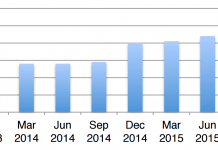 Territorial rights restrictions on e-books can be frustrating. For those who have only gotten into e-books recently, it can be easy to forget that they originated with another form of media altogether. On Wired Magazine, Mike Ryan takes a look at the DVD region code system, and ponders why it still even exists at all.
Territorial rights restrictions on e-books can be frustrating. For those who have only gotten into e-books recently, it can be easy to forget that they originated with another form of media altogether. On Wired Magazine, Mike Ryan takes a look at the DVD region code system, and ponders why it still even exists at all.
Region codes were originally introduced as a form of protectionism, to allow staggered movie releases in one part of the world while preventing imports from other parts of the world from taking money out of the pockets of the local distributor. This is much the same reason that e-books have territorial restrictions today.
But region codes were developed at a time when nobody could imagine being able to download an entire movie from the Internet. The pace of peer-to-peer proliferation makes concerns of importing look positively quaint. And movie releases are a lot less staggered now than they were back in those days. Also, region-free DVD players and software are a lot easier to find now than they used to be.
Even the simpler region system Blu-ray has goes relatively unused—Ryan’s article says that by some estimates nearly 70% of Blu-ray discs carry no region code at all.
If region codes are becoming less important to movie studios with the advent of digital downloading, it’s kind of ironic that digital downloading is exactly what pushed publishers into implementing region controls. Since DVDs still are physical product, people who want to order DVDs from other regions are slightly better off than people who want e-books from other regions—they can at least order the DVDs to be physically shipped to them, and acquire region-free viewing capabilities by other means. Those who want out-of-region e-books are out of luck, unless they choose to pirate them.
































